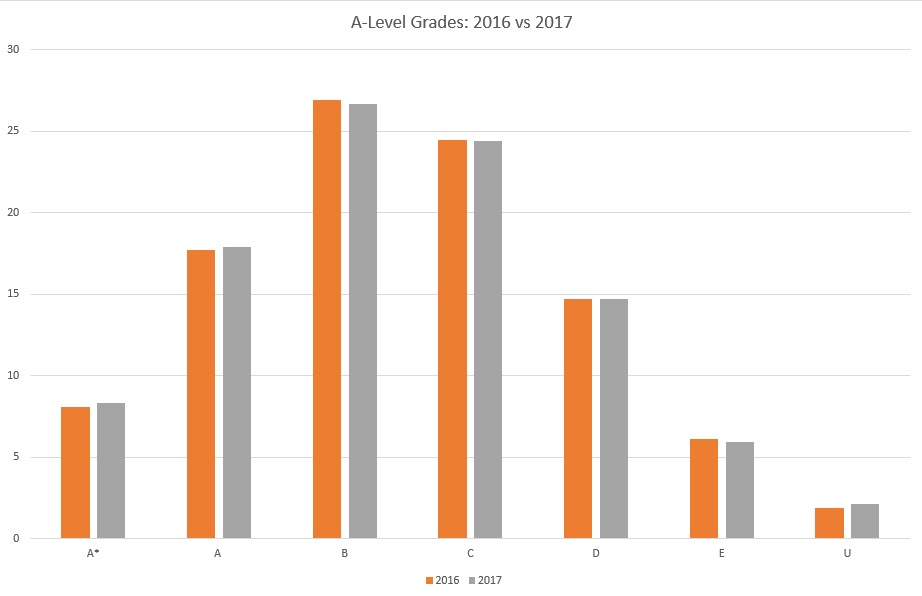A-level results are out! Here’s what we know…
1. Overall performance in England
The proportion of A* and A grades has increased by 0.4 percentage points, which is the first hike since 2011.
This year 26.2 per cent of grades were an A or A*, compared with 25.8 per cent last year.
On the other hand, the overall pass rate is down a tiny amount – with 97.9 per cent of entries receiving at least an E grade – just 2.1 per cent received U grades.
This is a shift of 0.2 percentage points compared with last year.
2. A-level grade distribution: 2015 vs 2016

3. Which subjects are gaining/losing popularity?
For the second year in a row the 10 most popular A-level subjects are exactly the same.
There was one change in order, when chemistry overtook history and slid into fourth place, as the latter dropped eight per cent of pupils this year.
Maths remained the nation’s favourite subject, with a slight rise in entries.
Computing also continues to rise in popularity, and politics is having a resurgence with a 12.8 per cent increase in entries in one year.
But it looks as if performing arts and music are on the wane, with around a 10 per cent drop for each.
Much has been made of the idea that this is due to the rise of ‘facilitating subjects’, but English language and English literature also decreased in popularity this year.
Language took a tumble of around 10 per cent, while literature fell around four per cent.
4. Which subjects have the biggest gender gap in entries?
The trend is that the most extremely gender-divided subjects are increasingly dominated by one group.
Computing continues to have a high gender gap and things are getting worse.
This year, the proportion of girls studying computing fell to just 9.4 per cent of entries, while last year they made up 9.8 per cent.
For reference, ICT – the subject precursor of computing, which is being reduced by the government – had female candidates as more than a third of its entries.
But boys are worse off in performing and expressive arts, where they made up just 8.8 per cent of the cohort, down from around 10 per cent last year.
Which subjects do male and female candidates do best in?
Male candidates tend to receive far more A*s than female candidates, and that trend progressed this year.
Almost nine per cent of male candidates gained an A* compared with last year when it was just 8.5 per cent.
The number of women getting an A* remained at 7.7 per cent.
However, girls do better across As, BCs and Cs, meaning that around 79 per cent get one of these grades. Only 75 per cent of boys achieve the same.
Male candidates received higher numbers of A and A*s than female candidates in: German (+5.7%), chemistry (+4%), computing (+3.6%) and English literature (+1.2%)
Female candidates did significantly better in A and A*s than their male peers in: PE (+12.8%) and psychology (+8.8%)
Schools Week will be analysing the trends throughout the day. Check back for more.



Your thoughts